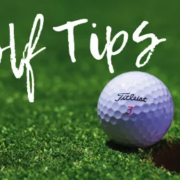The Rules of Golf are tricky! Thankfully, we’ve got the guru. Our Rules Guy knows the book front to back. Got a question? He’s got all the answers.
On a short par 3 over water, the tee box was placed with an overhanging tree on the line to the pin. I moved the left tee marker a few feet so that the tee shot could be hit without obstruction. This was done before everyone teed off — in fact, my opponent played first and I hit second. What is the correct penalty? This has sparked a huge debate in my men’s league. —JASON WRIGHT, VIA E-MAIL
Jason, the fact that you ask what the penalty is — rather than if there’s a penalty — suggests you know you’ve done wrong … and you have. (Admitting that you have a problem, however, is the first step toward recovery of your honor.)
Tee markers are fixed — yes, even poorly positioned ones. Under Rule 8.1a, if you move one to gain a potential advantage by improving the conditions affecting the stroke, you must take the general penalty, which is two strokes in stroke play or loss of hole in match play. (Other players could likewise be subject to penalty if they knowingly took advantage of your maneuver.)
Source: Golf.com

